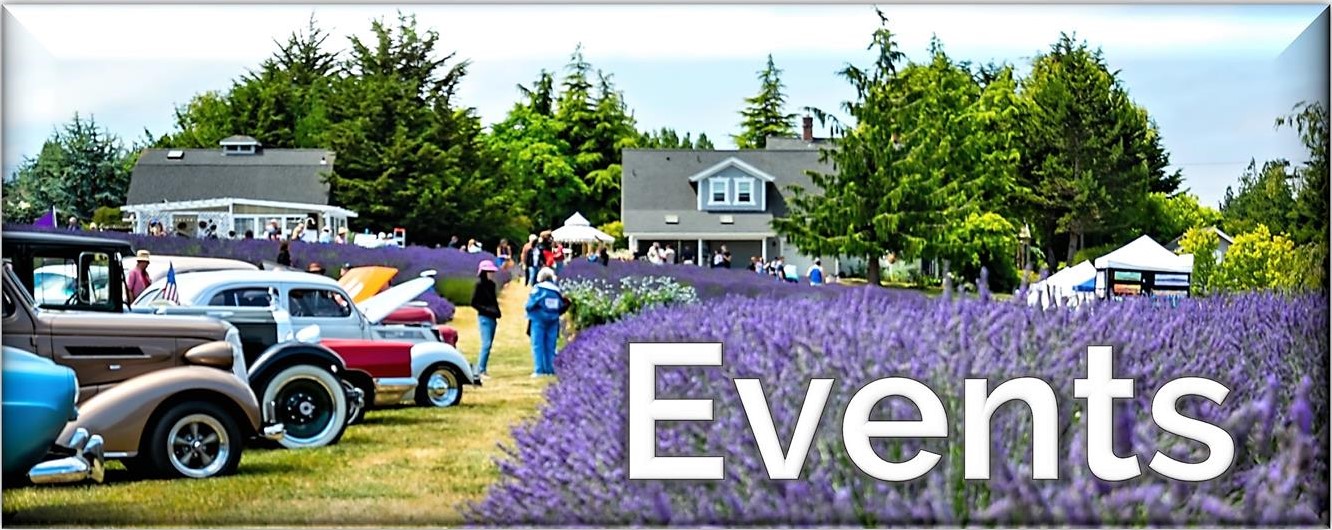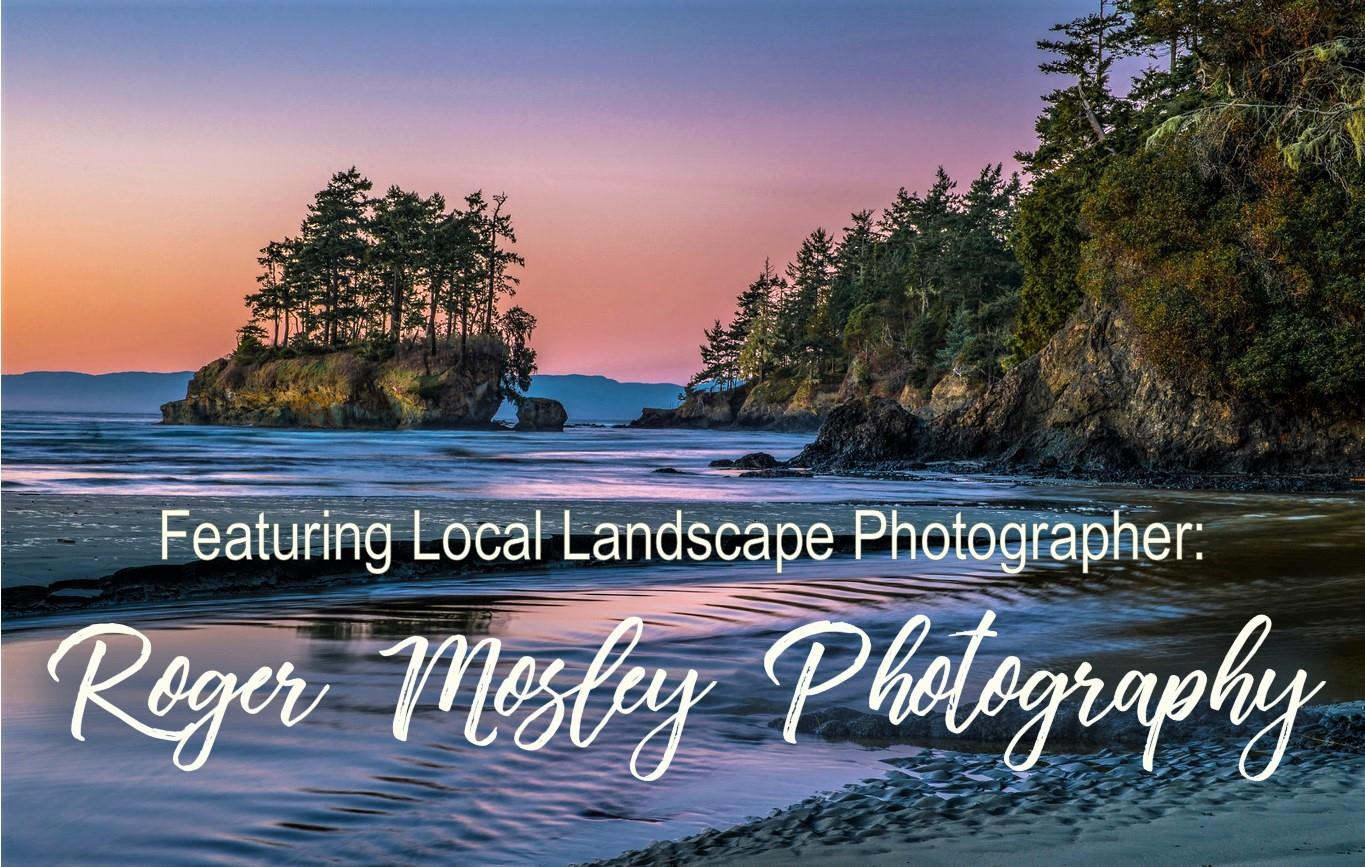Forks WA History
Forks WA History: The story of how the town of Forks sprang up in the middle of the Washington rain forest, plus the influence of the Twilight saga.
What is a nice little town like Forks doing in the middle of a rain forest?
Glad you asked; here are the why's and the wherefore's.
Forks WA History Starts With the
Native Quileute Tribe
Before the establishment of a town in the middle of a rain forest, the Quileute Indian tribe lived throughout a large segment of the middle-west Olympic Peninsula, from the region south of Ozette Lake, to land north of the Quinault River, including the area that Forks would one day occupy.
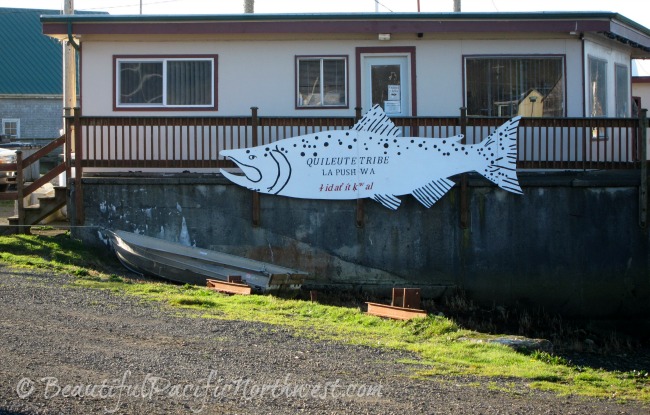 Quileute Tribal sign in La Push WA
Quileute Tribal sign in La Push WAIn the midst of their densely forested territory, they had an ingenious way of attracting the elk that they hunted for meat: they created prairies by concentrating their tree-harvesting efforts in certain areas. They felled trees by burning and then used the wood for their homes and canoes. The large open prairie drew the elk herds which foraged on the grasses, bushes, berry-brambles and several fern species blanketing every open area.
Periodic burning of the prairies stimulated the growth of the tender ferns, and also helped to perpetuate the prairie.
The Quileutes had created several prairies in this fashion; it was the prairie wedged between the forks of the Calawah and the Bogachiel Rivers that attracted settlers to the region and helped to name the town of Forks.
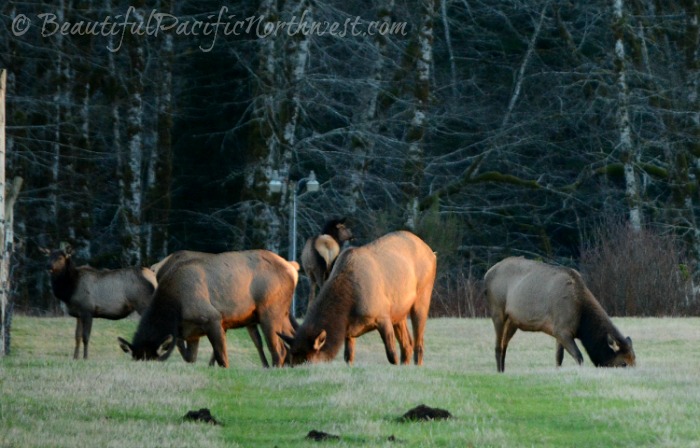 Herd of Roosevelt elk grazing at dusk near Forks, WA
Herd of Roosevelt elk grazing at dusk near Forks, WAForks WA History: Settlers Came
By the time the first settlers began trickling into the western Washington forests in the mid-1800's, the prairie between the forks of the rivers 12 miles inland from La Push was a mile wide and three miles long.
A few intrepid trappers, Eli Peterson, Ole Nelson, and Peter Fisher, had preceded them, and they were already living in this "prairie upstream," as the Quileutes called it in their native tongue.
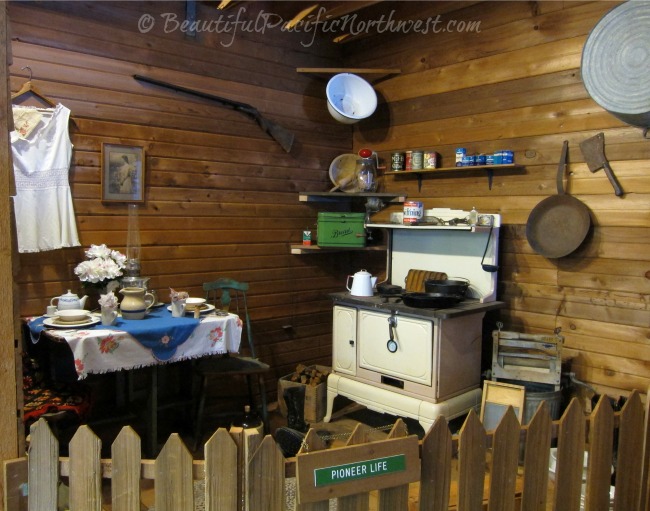 Exhibit of pioneer life at the Forks Timber Museum in Forks WA
Exhibit of pioneer life at the Forks Timber Museum in Forks WAOver the next several decades, settlers made their way to the Forks prairie the only way they could - via boat to the shores of the Olympic Peninsula and then inland on primitive, and muddy, foot paths.
1884 was the year the post office was first set up, under the name Forks Prairie. By 1890, the town of Forks consisted of a hotel, hardware store, general store, and the scattered homes of the settlers.
Forks WA History: Farming, Not Logging (Yet)
The settlers were farmers, not loggers. Besides the vegetables, grains and forages needed by the community, the settlers attempted to raise and market hops. The crop grew very well, however the difficult logistics of getting the hops to market - transporting it either over land to Port Townsend (100 miles away) on muddy footpaths, or via boat - proved daunting. More often than not, the hops rotted before they reached market.
The Forks Cooperative Creamery swung into operation in the early 1900's, marketing milk locally, and butter to destinations as far away as Seattle.
Forks WA History: Timber
It was inevitable that a town choked by trees would soon turn to those trees as a source of income.
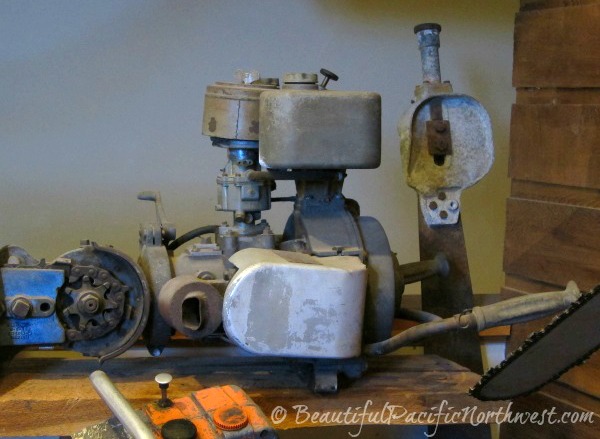 Ancient 2-man chainsaw displayed in the Forks Timber Museum in Forks WA
Ancient 2-man chainsaw displayed in the Forks Timber Museum in Forks WABy the 1900's, timber camps were in full swing. A brutal hurricane in 1921 (winds to 170 miles per hour) flattened nearly 20% of the forests surrounding Forks Prairie. The ready availability of so many board-feet of wood just lying on the ground spurred timber harvesting efforts.
Bloedel-Donovan was a timber company that invested in thousands of acres in the Forks WA area in 1921. They built their own railroad line to Sekiu so logs could be floated in the Strait of Juan de Fuca and towed to Bellingham in huge rafts.
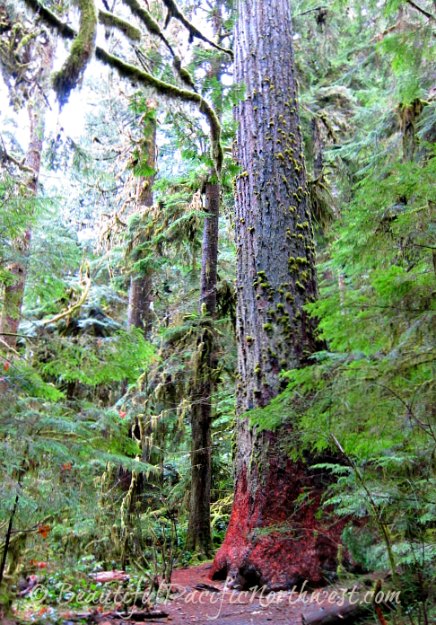 Massive old-growth tree still standing and growing in the Washington rain forest
Massive old-growth tree still standing and growing in the Washington rain forestTimber development grew over the years. Every improvement to the infrastructure provided more avenues for transporting the logs. The Olympic Loop Highway (Highway 101) certainly helped. It was completed in 1931.
Around this time ITT Rayonier began operations in the Forks region, employing hundreds of lumberjacks. To this day Rayonier owns more land than any other landowner in the west end of Clallam County.
On August 28, 1945, subsequent to a successful vote of the citizens, the town of Forks was officially incorporated under the name, Forks.
The timber industry continued to grow and then peaked in the 1970's. By then, Forks WA had earned the moniker, "Timber Capital of the World."
Timber harvesting has declined since then for several reasons, most of them environmental. As governmental legislation crippled the industry, mills were forced to close. The number of logging companies declined from 70 (in 1980) to 14 in 2001. The number of forest-related jobs diminished and unemployment soared. People left town to find their fortunes elsewhere, and the population tanked.
Forks WA History: Today
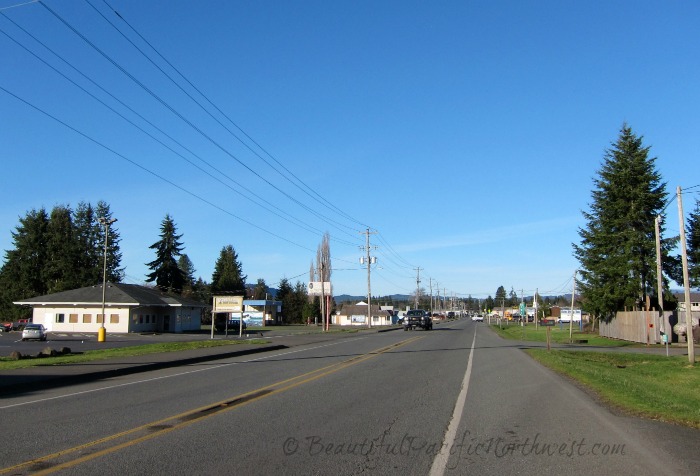 Forks Avenue (Highway 101) heading north into Forks WA
Forks Avenue (Highway 101) heading north into Forks WAToday the Forks population has rebounded somewhat. It has surpassed the pre-collapse numbers. The current estimated population of Forks WA is roughly 3,700 residents, which is more than its population during the timber heyday. Timber is still a significant industry even if reduced.
Work can also be found in two nearby prisons, in Fish and Wildlife, fisheries, forestry, and in the fields of education and health, among others.
Forks WA History: Twilight Saga Tourism
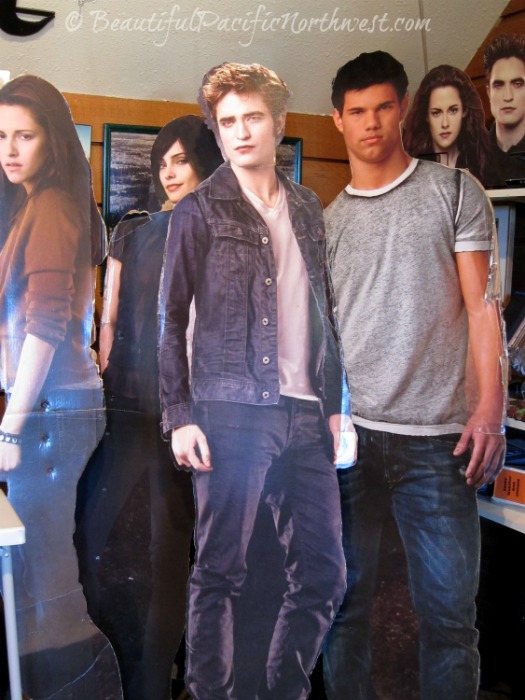 Lifesize Twilight Character Cutouts - take your photo with one or all, at the Forks Chamber of Commerce!
Lifesize Twilight Character Cutouts - take your photo with one or all, at the Forks Chamber of Commerce!The publication of Stephenie Meyer’s Twilight Saga in 2005 impacted Forks WA history and tourism in a very positive way. The Twilight Sage is a series of 4 teen novels set in the Forks WA area, which created a boom in tourism for the little town of Forks. It now typically sees 40,000 – 70,000 or more tourists throughout the year drawn by the Twilight story, the rainforest ambience, and the Twilight Tours that help “Twi-Fans" relive a touching love story.
Port Angeles, WA, is approximately 53 miles (85.3 km) east of Forks, which equates to a drive of roughly 1.1 hours. But, if Port Angeles is not your starting point, then:
- Sequim is 73 miles (117.5 km) to the east of Forks, a drive of roughly 1.5 hours
- Port Townsend is 103 miles (165.76 km) to the east of Forks, a drive of roughly 2.2 hours
- Aberdeen: 107 miles (172.2 km) to the west/south of Forks, a drive of a little more than 2 hours
- Seattle (via Bainbridge ferry) is 138 miles (222 km) to the east of Forks, a commute of approximately 3.7 hours if the ferry waits are reasonable.
- Or: If you skip the ferry, then Seattle is 211 miles (339.6 km) distant to Seattle, a drive of approximately 4.5 hour because you'll need to circumnavigate most of the Olympic Peninsula by going through Olympia on Interstate 5, then west on Hwy 8 and Hwy 12, and then west and north on Hwy 101 along Washington's Pacific coast.
Find a bit more Forks WA history on Wiki.
Do You Have Insights Into the History of This Area?
Tell Us Your Stories and Share Your Photos!
Tell Us Your Stories and Share Your Photos!
History is what the present has been built upon. It's the foundation of what we see and know today. Echoes from the past that retell happenings, simple or significant, connect us to our roots. The knowledge of what took place here long ago can add a valuable dimension and give special worth to a place in our minds and hearts.
Do you have an interesting, factual story about the history of this area? We'd love to hear about it! And please share any old, historic photos if you have them as well! We'd really appreciate that! Just click into the title box below and go from there. When published, you'll have "your own" page on MyPortAngeles which you can share with friends or anyone who asks!
We're happy to ensure professional and amateur photographers get credit for their work. Leave us your name in the form below, and means of contact, website, or FB page info so we can link back to you.
